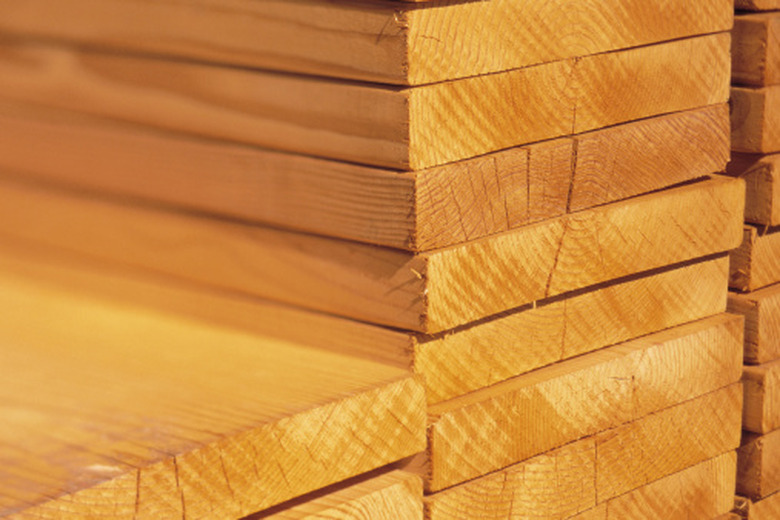What Are The Standard Lengths For Dimensional Lumber?
Most dimensional lumber comes in length increments of 2 feet. Industry standard lengths helps architects, suppliers and builders. Using uniform lengths makes drawing, planning and constructing the building easier. Lumber lengths enable costs to be more precisely determined. It also standardizes milling and makes the market more competitive. Knowing lumber sizes in advance helps reduce waste. Lumber dimensions in widths and thickness are 1/2-inch less than the size. For example: a 2-by-4 actually measures 1 1/2 inches thick and 3 1/2 inches wide. Dimensions of 2-by-8 and greater are 1/4-inch smaller in width. A 2-by-10 actually measures only 9 1/4 inches wide.
Wall Studs
The most common dimensions of wall studs are 2-by-6 and 2-by-4. Wall studs for standard walls of 8 feet are 92 5/8 inches. In homes with 9-foot walls, the studs are 104 5/8 inches. Homes with a wall height of 10 feet use pre-cut studs at 116 5/8 inches. When there is a single bottom plate and a doubled top plate used, this gives an approximate height of 8, 9 and 10 feet for the home's walls. Wall plates are the top and bottom lumber pieces that run perpendicular to the studs. This is the lumber to which the studs are nailed.
Common Lengths for Wall Construction
When using studs, other dimensions of 2-by-4 and 2-by-6 lumber is used. Standard lengths for these range from 8 feet up to 16 feet. These lengths are used for wall plating, window and door framing and bracing. Other lengths are available for unusual situations. Both 18- and 20-foot lengths are produced by mills but are not commonly stocked at most building-supply stores.
Floor Joists
Floor framing requires 2-by-8, 2-by-10 or larger dimensional lumber. Normally, these are available in 8- to 16-foot stock lengths. By knowing the standard lengths available, builders are able to configure how best to place the floor joists. If a room is 12 by 14 feet, the contractor has the choice of placing them in the 14-foot or the 12-foot direction. This eliminates waste and gives the option of using the best price-per-foot cost.
Special Lengths
In larger dimensions of lumber, such as 2-by-10 and 2-by-12, lengths up to 24 feet are available from mills and distributors. Transportation issues, structural concerns and handling problems prohibit lengths longer than this. When longer lengths are required, engineered wood products are available to meet the needs of these demands.
